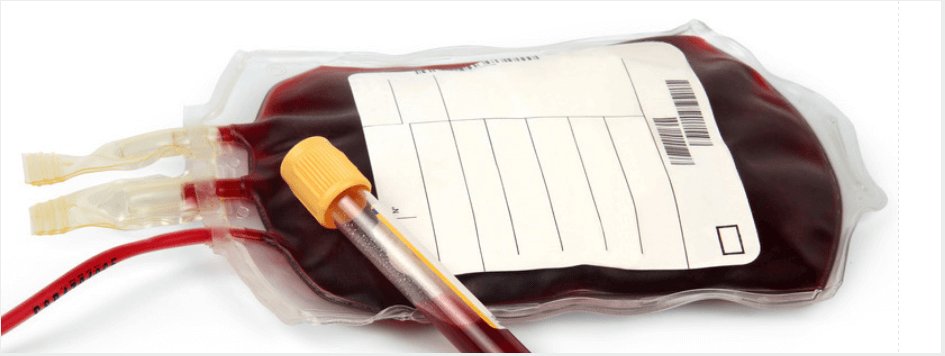Blood transfusion can be a life-saving treatment of great clinical benefit but also carries several risks and potential associated problems including:
- Immunological complications
- Administration errors (‘wrong blood’ episodes)
- Infections (bacterial, viral, possibly prion)
- Immunodilution
Growing awareness of avoidable risk, and improved reporting systems, have led to a culture of better safety procedures as well as steps to minimise the use of transfusion. However, transfusion errors continue to occur and some serious adverse reactions continue to be unreported.
The most commonly encountered transfusion reactions are:
- Febrile transfusion reactions
- Acute haemolytic transfusion reactions
- Delayed haemolytic transfusion reactions
- Allergic reactions
- Transfusion-related lung injury (TRALI)
- Transfusion-associated circulatory overload (TACO)
- Transfusion associated graft-vs-host disease (TA-GVHD)
- Febrile transfusion reactions
Febrile transfusion reactions, which are also referred to as non-haemolytic transfusion reactions, present with an unexpected temperature rise (≥ 38ºC or ≥ 1ºC above baseline, if baseline ≥ 37ºC) during or shortly after transfusion. This is usually an isolated finding. Occasionally the fever is accompanied by chills.
Cytokine accumulation during storage of cellular components (especially in platelet units) is thought to be the most common event leading to symptoms of febrile transfusion reactions. Cytokines are released by white cells and pre-storage leucodepletion has reduced this risk.
Febrile transfusion reactions can also be caused by the presence of recipient antibodies (raised as a result of previous transfusions or pregnancies) reacting to donor human leukocyte antigen (HLA) or other antigens. These antigens are present on donor lymphocytes, granulocytes, or platelets.
Treatment is supportive. Other causes should be excluded and antipyretics, such as paracetamol are helpful to relieve the fever. If another cause is suspected the transfusion should be stopped but it can be recommenced, at a slower rate, if other causes of a fever have been excluded.
- Acute haemolytic transfusion reactions
Acute haemolytic transfusion reactions occur as the result of incompatible transfused red cells reacting with the patient’s own anti-A, anti-B or other alloantibodies. Infusion of ABO incompatible blood almost always occurs due to human error, such as mislabeling sample tubes or request forms.
Acute haemolytic transfusion reaction present with the following clinical features:
- Feeling of ‘impending doom’ often the earliest symptom
- Fever and chills
- Pain and warmth at transfusion site
- Nausea and vomiting
- Back, joint, and chest pain
- Tachycardia and hypotension can occur
The transfusion should be stopped immediately and donor blood replaced with normal saline or another suitable crystalloid. The blood should be checked to confirm that the patient was the intended recipient and the unit should be sent back to the blood bank. IV diuretics, such as furosemide, can be administered to increase renal blood flow. Urine output should be maintained at 30-100 ml/hour.
- Delayed haemolytic transfusion reactions
Delayed haemolytic transfuion reactions (DHTRs) usually manifest 4-8 days after transfusion of a red cell component, but can occur up to a month later.
Signs and symptoms are similar to an acute haemolytic transfusion reaction but tend to be less severe. The patient may have a fever, an inadequate rise in haemoglobin, jaundice, reticulocytosis, a positive antibody screen and a positive Direct Antiglobulin Test (Coombs test).
DHTRs occur in approximately 1 in 2500 blood transfusions but are more common in patients with sickle cell disease who have received frequent blood blood transfusions.
They are due to the presence of a low titre antibody too weak to be detected in cross-match and unable to cause lysis at time of transfusion. The clinical severity of the DHTR depends upon the immunogenicity or dose of the antigen. Blood group antibodies associated with DHTRs include those of the Kidd, Duffy, Kell and MNS systems.
- Allergic reactions
Mild allergic reactions during blood transfusion are relatively common. Reactions usually start within a few minutes of commencement of the transfusion.
Allergic reactions occur when patients have antibodies that react with foreign plasma proteins in transfused blood components. Mild allergic reactions present with urticaria, pruritis and hives.
Anaphylaxis is much rarer and occurs when an individual has previously been sensitized to an allergen present in the blood and, on re-exposure, releases IgE or IgG antibodies. Patients with anaphylaxis may develop bronchospasm, laryngospasm, abdominal pain, nausea, vomiting, hypotension, shock, and loss of consciousness. These reactions can be fatal.
Mild allergic reactions can be treated by slowing the transfusion rate and administering antihistamines. The transfusion may be continued if there is no progression at 30 minutes. Pre-treatment with chlorphenamine should be given if a patient has experienced repeated allergic reactions to transfusion.
If anaphylaxis develops the transfusion should be stopped immediately and the patient should be treated as per the ALS protocol with oxygen, adrenaline, corticosteroids, and antihistamines.
- Transfusion-related lung injury (TRALI)
Transfusion-related lung injury (TRALI) is a form of acute respiratory distress thought to be caused by the donor plasma containing antibodies against the patient’s leukocytes. It is defined as hypoxia and bilateral pulmonary oedema occurring within 6 hours of a transfusion in the absence of other causes, such as cardiac failure or volume overload.
The commonest clinical features of TRALI are:
- Hypoxia
- Breathlessness
- Cough (can be non-productive)
- Frothy sputum
- Fever
- Hypotension or hypertension
The chest X-ray will show multiple perihilar nodules with infiltration of the lower lung fields. The pulmonary oedema is not cardiogenic in origin i.e. the pulmonary artery wedge pressure (PAWP) will be < 18 mmHg.
The transfusion should be stopped immediately and oxygen administered. Respiratory support, such as NIV or intubation and ventilation, is often required. Diuretics should be avoided and there is no evidence for the use of corticosteroids.
Implicated donors are usually multiparous women (who are more likely to have become alloimmunised) and should be removed from the blood panel where possible.
- Transfusion-associated circulatory overload (TACO)
Transfusion-associated circulatory overload (TACO) is a transfusion reaction that occurs due to a rapid infusion of a large volume of blood. It is the leading cause of transfusion-related death.
It occurs due to the rapid transfusion of blood in patients with diminished cardiac reserve or chronic anaemia. Elderly patients, infants and severely anaemic patients are particularly susceptible.
The typical clinical features of TACO include the following:
- Acute respiratory distress
- Tachycardia
- Hypertension
- Acute/worsening pulmonary oedema on chest X-ray
- Evidence of positive fluid balance
The BNP can be a useful diagnostic tool in TACO and is usually raised to at least 1.5 times the pre-transfusion baseline.
In many cases simply slowing the transfusion rate, placing the patient in an upright position, and administering diuretics will suffice. In more severe cases the transfusion should be stopped and non-invasive ventilation considered.
- Transfusion associated graft-vs-host disease (TA-GVHD)
Transfusion associated graft-vs-host disease (TA-GVHD) is a rare complication of blood transfusion that presents with fever, rash and diarrhoea 1-4 weeks post-transfusion. Common laboratory findings include pancytopaenia and abnormalities of liver function.
Unlike GVHD after allogeneic marrow transplantation, TA-GVHD leads to profound marrow aplasia with a mortality rate >90%. Survival is rare with death typically occurring within 1-3 weeks of first symptoms.
Viable T lymphocytes in blood components are transfused, engraft and react against the recipient’s tissues and the recipient is unable to reject the donor lymphocytes because of immunodeficiency, severe immunosuppression, or shared HLA antigens.
Management is supportive only and there are no effective treatments currently available.
The following table summarises the main transfusion reactions and complications that can occur:
| Complication | Features | Management |
|---|---|---|
| Febrile transfusion reaction | Presents with 1 degree rise in temperature from baseline. Patient may also have chills and malaise. Most common reaction (1 in 8 transfusions). Usually caused by cytokines from leukocytes in transfused red cell or platelet components. | Supportive only. Paracetamol helpful. |
| Acute haemolytic reaction | Fever, chills, pain at transfusion site, nausea, vomiting, dark urine. Feeling of ‘impending doom’ often reported early on. Most serious type of reaction. Often ABO incompatibility due to administration error. | STOP THE TRANSFUSION. Administer IV fluids. Diuretics may be required. |
| Delayed haemolytic reaction | Most commonly occurs 4-8 days after a blood transfusion. Patient presents with fever, anaemia, jaundice and haemoglobuinuria. Direct antiglobulin (Coombs) test positive. Due to low titre antibody too weak to detect in cross-match and unable to cause lysis at time of transfusion. | Most delayed haemolytic reactions have a benign course and require no treatment. Monitor anaemia and renal function and treat as required. |
| Allergic reaction | Usually caused by foreign plasma proteins but may be due to anti-IgA. Allergic type reactions usually present with urticaria, pruritis, hives. May be associated with laryngeal oedema or bronchospasm. Anaphylaxis rare. | For allergic reactions treat symptomatically with antihistamines. There is no need to stop transfusion. If anaphylaxis occurs the transfusion should be stopped and the patient should be administered adrenaline and treated as per the ALS protocol. |
| TRALI (Transfusion Related Acute Lung Injury) | Abrupt onset non-cardiogenic pulmonary oedema within 6 hours of transfusion. Associated with the presence of antibodies in the donor blood to recipient leukocyte antigens. | STOP THE TRANSFUSION. Oxygen should be administered. Approximately 75% of patients require aggressive respiratory support. Diuretic usage should be avoided. |
| TACO (Transfusion Associated Circulatory Overload) | Acute or worsening respiratory distress within 6 hours of transfusion of a large volume of blood. Evidence of pulmonary and peripheral oedema and fluid overload. Rapid increases in blood pressure common. BNP is usually elevated to at least 1.5 times pretransfusion value. Most commonly occurs in the elderly and those with chronic anaemia. TACO is the leading cause of transfusion-related death. | Blood transfusion should be slowed so that the unit is given over 3-4 hours. Diuretics should be administered with the transfusion. |
| GVHD (Graft-vs-Host Disease) | Rash, fever, diarrhoea, and liver dysfunction 1-4 weeks after transfusion. Viable T lymphocytes in blood components are transfused, engraft and react against the recipient's tissues and the recipient is unable to reject the donor lymphocytes because of immunodeficiency, severe immunosuppression, or shared HLA antigens. | Treatment is supportive and there is no proven effective treatment for transfusion-associated GVHD. |
Header image used on licence from Shutterstock
Thank you to the joint editorial team of www.mrcemexamprep.net for this article.







Important informations about blood transfusion reactions. Thank you very much.